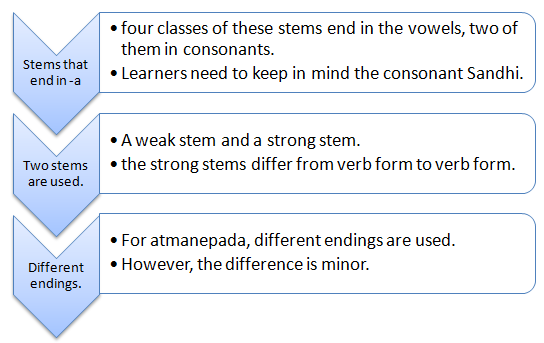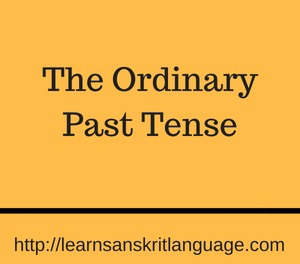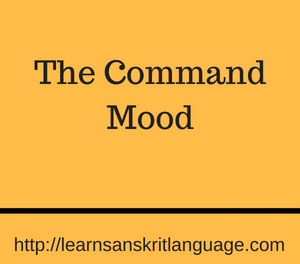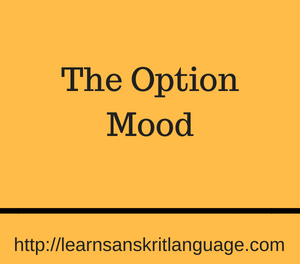As the name itself suggests, these are “complex” verbs, and in the following ways different from the verbs we have learned up until now. Let us look at these distinct characteristics of complex classes.
This chapter will progress in such a way that firstly we shall learn about how the five classes of the six behave, and then we shall look at irregular endings and them at the atmanepadi endings. However, let us take a glance at the basics again.
Verb class is broadly divided into two parts: root and nasal. In case of the root form, a strong stem would be a medium strengthened root, and in the weak stem, the root word would stay as it is. As for the nasal class, the strong stem is inserted with a “na” and the weak stem is inserted with an “n”.
Very often, the example that is used to manifest the root class is called “ad” which means to eat. However, the verb used by us is “dvis”, which means hate. Look at the table given below to gain clarity on the same. The ones which are in strong form are done in italics.
| Singular | Dual | Plural | |
| Third person | dveshti | dviṣanti | |
| Second person | dvekshi | ||
| First person | dveṣmi | dviṣvaḥ | dviṣmaḥ |
Now let take a look at the nasal sounds. Please note that the nasal sounds are attached before the last consonant. Here we shall take the example of the word rudh. Rudh in its unchanged form, can be used as both passive and active, and is in the present tense.
Look at the table given below to understand this further. Again, strong forms are highlighted.
| Singular | Dual | Plural | |
| Third person | रुणद्धि, ruṇaddhi
|
रुन्धन्ति, rundhanti | |
| Second person | रुणत्सि, ruṇatsi | ||
| First person | रुणध्मि, ruṇadhmi | रुन्ध्वः, rundhvaḥ | रुन्ध्मः, rundhmaḥ |
Please note: all the roots in the class will always have a consonant at last. Therefore, it is easier to decipher where it is to be inserted.
Now let us look at verbs with o-stems, but before that, we need to take a look at the basics.
If a verb class is made up of no, the strong stem will be made up of root and no, however, weak stem will be made up of root and nu.Similarly, if the verb class is made up of O, the strong stem will be made up of root form and O and the weak stem will be made up of the root and u. Now let us take a look at what happens when the “no” is added to the root “su” which can be used in the passive form and present tense.
| Singular | Dual | Plural | |
| Third person | सुनोति, sunoti | सुन्वन्ति, sunvanti | |
| Second person | सुनोषि , sunoṣi | ||
| First person | सुनोमि, sunomi | सुनुवः, sunuvaḥ | सुनुमः, sunumaḥ |
Now let us look at another example where “O” is added. The example we are going to take is of “tan”, which is in the present tense.
| Singular | Plural | Dual | |
| Third person | तनोति, tanoti | तन्वन्ति, tanvanti | |
| Second person | तनोसि, tanosi | ||
| First person | तनोमि, tanomi | तनुवः, tanuvaḥ | तनुमः, tanumaḥ |
Now let us take a look at the “na” class of verbs. In the formation of a strong stem, the “na” is added to the root. For the formation of a weak stem, “ni” is added to the root. However, in the third person plural, the verb used is “n” and not nī.
The example we use in this case is that of kri, which is in the present tense. Please look at the table below to learn further.
| Singular | Plural | Dual | |
| Third person | क्रीणाति, krīṇāti | क्रीणन्ति, krīṇanti | |
| Second person | क्रीणासि, krīṇāsi | ||
| First person | क्रीणामि, krīṇāmi | क्रीणीवः, krīṇīvaḥ | क्रीणीमः, krīṇīmaḥ |
Now we need to look at the unpopular irregular verbs. Irregular verbs are important because they are highly common in the Sanskrit language. The example we shall be looking at the P verb, which means as, that also happens to be the verb “be”. The weak stem of this is “s”, however, the second person singular is asi, not assi.
| Singular | Plural | Dual. | |
| Third person | अस्ति, asti | सन्ति, santi | |
| Second person | असि, asi | ||
| First person | अस्मि, asmi | स्वः, svaḥ | स्मः, smaḥ |
Another example that we are going to take is of “han “, which means slay or kill. As in the other verbs, the strong stem is Han; the weak stem will take three different forms and will be illustrated through the table given below. Ghn is used when it is attached to vowels, ha is used for stop consonants. And of course, han is used everywhere else.
| Singular | Plural | Dual | |
| Third person | hanti | ghnanti | |
| Second person | hansi | ||
| First person | hanmi | hanvaḥ | hanmaḥ |
Another example that follows this rule is “bru”, which signifies speaking or telling. In this word, when ī is added, it becomes bravīmi and not bromi.
However, when it comes to the third person plural, the verb used formed is bruvanti, not brvanti. Look at the table given below to understand how a vowel followed by another vowel and consonant cluster, changes.
i and ī these two become “iy”
u and ū these two become uv
Important things to keep in mind about O and nā
As for o class, its most important verb is kṛ, which indicates “make” or “do”. In the strong form, it would be karo, in the weak form, it would be kuru.
In the similar manner, for the nā class, the consequential verb jñā, which means know, however the sound ñ is removed. Therefore, what are formed are joint words like jānāti.
Now let us look at the words which have Atmanepada endings. The Atmanepada words are called so because they only use weak endings. All this will be easily understood with the help of the example given in the table below. Here we shall take the example of the word “su”, which is in present tense.
| Singular | Plural | Dual | |
| Third person | सुनुते, sunute | सुन्वते, sunvate | |
| Second person | सुनुषे, sunuṣe | ||
| First person | सुन्वे, sunve | सुनुवहे, sunuvahe | सुनुमहे, sunumahe |
Please keep in mind that the complex verbs use the same endings as the simple verbs. Please look at the table given below, and the diagram following it to understand this further.
| Singular | Plural | Dual | |
| Third person | लभते, labhate | लभन्ते, labhante | |
| Second person | लभसे, labhase | ||
| First person | लभे, labhe | लभावहे, labhāvahe | लभामहे, labhāmahe |
The changes are listed below:
- āmahe → mahe, āvahe → vahe (the initial vowel is removed)
- nte → ate (see the blue box below)
To understand the second example, we need to reminiscence how gam becomes gata, this happens because weakened form of gam is gm, which in turn becomes gmtva, which just can’t be pronounced, but instead of that gm becoming gam, it becomes ga, and then it becomes gatva.
Another example of this is a verb belonging to the nasal class, rudh. Its weak form is rundh, in the third person plural it becomes, rundhnte.
It would be safe to say that “-ate” is used for all the classes of complex verbs.
Thus, these are what can be called “complex” classes.




